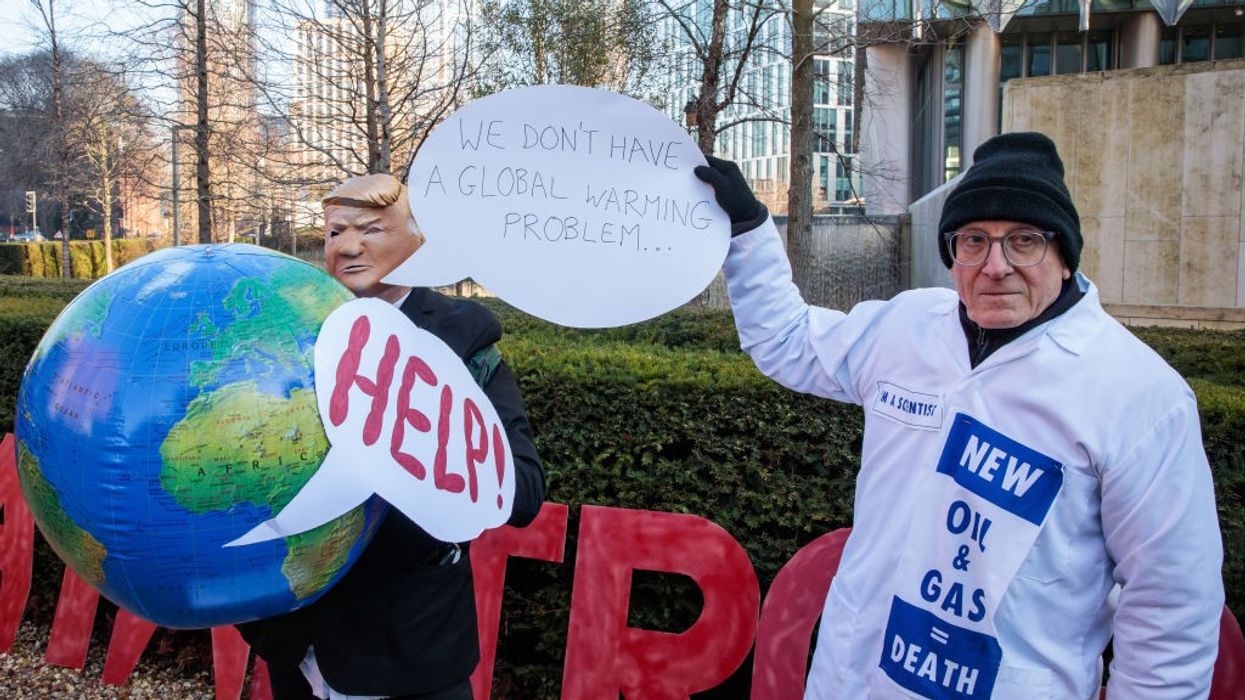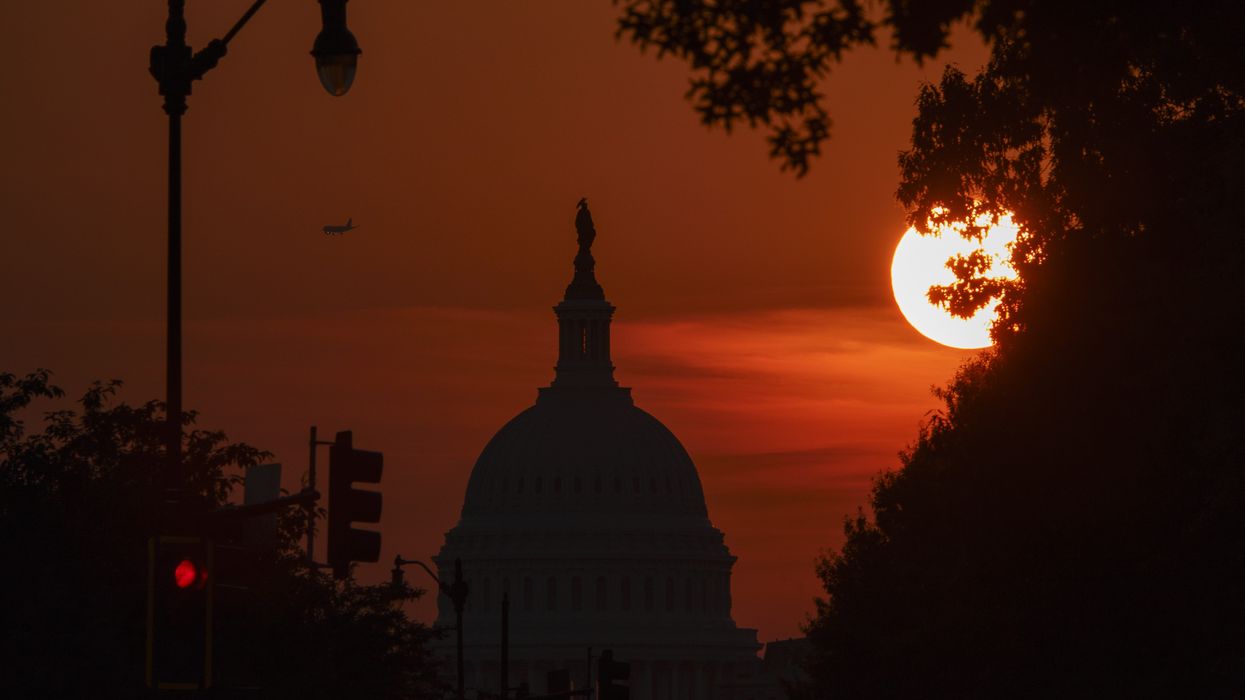The Trump Admin's Climate Denial Proposal Contradicts Science, Law, and Public Opinion
The world’s highest court recently affirmed that climate action is a legal duty and that governments must regulate greenhouse gas emissions.
When US Environmental Protection Agency, or EPA, Administrator Lee Zeldin announced last month his official proposal to rescind the agency’s foundational determination that greenhouse gas emissions endanger human health and welfare, he insinuated that previous administrations (under former Presidents Barack Obama and Joe Biden) had “twisted the law, ignored precedent, and warped science” in order to achieve their regulatory agendas. And the regulations of these planet-warming emissions, not the emissions themselves like carbon dioxide, are “the real threat to Americans’ livelihoods,” Zeldin suggested.
EPA’s greenhouse gas endangerment finding, established in 2009, serves as the basis of its legal obligation under the Clean Air Act to regulate greenhouse gas (GHG) emissions from sources such as motor vehicles and power plants. The finding was based on an extensive review of the scientific record, which has gotten even more robust over the last 16 years, and has survived all legal challenges brought against it.
The Trump administration’s move to do away with the finding contradicts the overwhelming scientific evidence that greenhouse gas emissions are driving dangerous climate change impacts. There are also arguments to be made that it is unlawful. And, it goes against the pleas of the hundreds of Americans who have spoken out this week in opposition to Zeldin’s sweeping deregulatory proposal. In other words, contrary to Zeldin’s assertion, it is actually the Trump administration that is twisting or ignoring the law and public sentiment and warping science.
Let’s start with the science. The world’s premier body of climate scientists—the Intergovernmental Panel on Climate Change—has stated that it is “unequivocal” that human activities are warming the planet and causing rapid and widespread changes, such as more extreme weather, that are unprecedented over millennia. The US Fifth National Climate Assessment report observes that “harmful impacts from more frequent and severe extremes are increasing across the country” and notes that “climate changes are making it harder to maintain safe homes and healthy families; reliable public services; a sustainable economy; thriving ecosystems, cultures, and traditions; and strong communities.” These are authoritative statements from reports involving hundreds of scientists and extensive peer review.
What the Trump administration is doing with repealing the endangerment finding and all GHG regulations that flow from it, therefore, could be a violation of international law under the ICJ’s recent advisory opinion.
But to support its proposal to rescind the endangerment finding, Trump’s EPA relies instead on a new report issued by the Department of Energy (DOE) that rejects the scientific consensus on climate change and claims that GHG emissions and climate impacts are not harmful. The report, hastily written by five climate skeptics over a period of just two months, recycles many climate denialist talking points and, according to one analysis, includes over 100 false or misleading statements. As science historian Naomi Oreskes puts it, “Climate denial is now the official policy of the US government.”
“What the Trump administration and the Department of Energy did is pull together this small hand-picked group of people to work in secret to write this report that questions that mountain of scientific evidence that climate change is harming people,” said Erin Murphy, a senior attorney at Environmental Defense Fund (EDF).
“In and of itself, the conclusions of that report are inaccurate and inconsistent with the vast, vast majority of scientific findings and the consensus across the scientific community,” she added. “But also, the report is inconsistent with federal law.”
EDF and the Union of Concerned Scientists have filed a lawsuit against the DOE, the EPA, and the group of five climate skeptics arguing that the secretive manner in which the report was pulled together violates the Federal Advisory Committee Act, which mandates transparency and opportunities for public engagement in government advisory proceedings.
The report has not gone through formal peer review, and although it is currently open to public comment, the time window for commenting is limited to just 30 days (closing on September 2) during a month when many people take vacations or might otherwise be unavailable. And until this week, none of the hundreds of comments that have come in were publicly visible. That hiding of the comments, Murphy said, “further underscores the government’s efforts to do this in secret.”
The lawsuit aims to block the Trump administration from using this report in its efforts to rescind the endangerment finding.
It was clear to me that the speakers—from environmental groups, the medical community and scientists to municipal and state governments and private citizens—were overwhelmingly united in their disapproval of the nixing of EPA’s foundational finding that GHG emissions endanger our health and welfare.
Even if EPA plows ahead and finalizes its move to eliminate the finding, that action will certainly be challenged in court. It remains to be seen what legal arguments environmental groups and other challengers will put forth.
One thing that is clear is that climate action is no longer optional, but rather a legal obligation, as several international courts have affirmed in recent landmark climate change advisory opinions. The International Court of Justice, considered the world’s highest court, delivered its opinion on July 23. The ICJ clarified that states have obligations under multiple sources of international law to reduce emissions and that governments must regulate the emissions of private actors. The customary law duty to prevent significant environmental harm to the climate system, which applies to all countries regardless of whether they are parties to specific treaties, includes putting in place “regulatory mitigation mechanisms” to reduce GHG emissions, the court said. Such rules “must regulate the conduct of public and private operators.” According to the court, failure to act in good faith to regulate emissions could be considered an unlawful act.
What the Trump administration is doing with repealing the endangerment finding and all GHG regulations that flow from it, therefore, could be a violation of international law under the ICJ’s recent advisory opinion. And while the opinion itself is nonbinding, it may be invoked in domestic court proceedings around the world, including in the US.
Zeldin’s endangerment finding rescission also seems to be untenable in the court of public opinion. “In repealing the endangerment finding, the Trump administration is stepping far out of line with public opinion, as voters across partisanship are in strong agreement that greenhouse gas emissions are a threat to public health and should be regulated,” Data for Progress says in reference to new poll results it released last week.
EPA held virtual public hearings last week on its proposal, and almost everyone who testified spoke in opposition to eliminating the endangerment finding. Out of the roughly 200 people who spoke on Tuesday, fewer than 10 voiced support for EPA’s rollback, Inside Climate News reports. I tuned into some of the hearings on Wednesday and Thursday, and it was clear to me that the speakers—from environmental groups, the medical community and scientists to municipal and state governments and private citizens—were overwhelmingly united in their disapproval of the nixing of EPA’s foundational finding that GHG emissions endanger our health and welfare.
“The EPA has a responsibility to regulate greenhouse gases for what they are—a clear, present, and growing threat to the health and well-being of every American,” Kim Cobb, a climate scientist, told the EPA panel in concluding her testimony.
Tiffany Covarrubias Lyttle, a registered nurse and mother of seven children, said during her testimony that the father of her children recently passed away from cancer, specially an environmentally triggered adenocarcinoma.
“Repealing environmental protections and rescinding [the endangerment] finding will make stories like mine more common,” Lyttle said. “Clean air, clean water, and a stable climate aren’t just environmental issues. They are in fact a matter of life and death.”
This piece was originally published on Dana Drugmand’s Substack One Earth Now on August 21, 2025.




